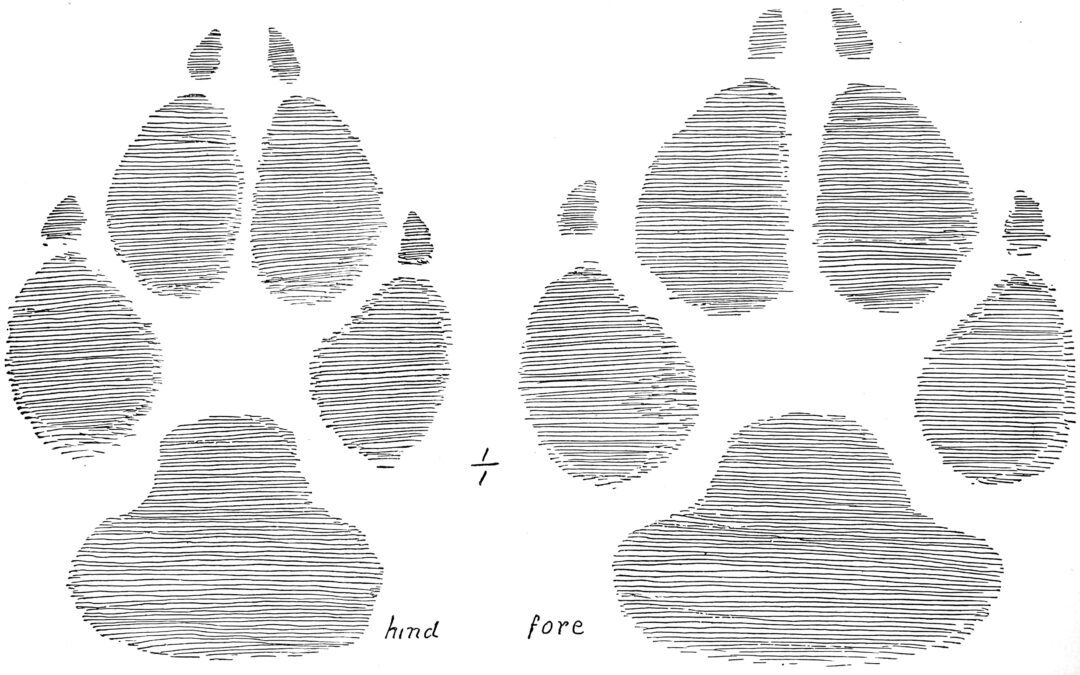Tracks of Large Gray-Wolf (Life Size) by Ernest Thompson Seton
This is one in an ongoing series of nature essays and artwork from Lives of Game Animals (1925-1928) by Ernest Thompson Seton. Seton’s analysis of Gray Wolf behavior was groundbreaking at the time. Since he devoted a large section of his Lives to Wolves, I am presenting his work over several postings.
I once heard a “pricking of the scalp” howl of a wolf while walking my dog Lucia on the mountainside above our house. I cautiously approached the place from which the sound emanated hoping to get Lucia out harm’s way. This proved easier than expected when I found out that she was the one responsible for the howl, the only time I ever noted her making that vocalization. I’ve always wondered what possessed her to do so. Maybe she knew something about a special visitor and was giving the welcoming signal.
THE WOLF HOWL/Vol I Pg 283
“The usual cry of the Wolf is a long smooth howl. It is quite musical, though decidedly eerie when heard in the woods at night. I cannot distinguish it from the howl of a large Dog. Its beginning is also much like the hoot of a horned owl. This is usually the “muster” or “rallying cry”—the intimation of the Wolf to his friends that he has found game too strong for him to manage alone. It is the call commonly heard at night about the settlers’ cabins and it never fails to affect me personally with a peculiar prickling in the scalp that I doubt not is a racial inheritance from the Stone Age.
A second sound is a higher pitched howl, vibrating on two notes. This may be styled the “hunting song”; it corresponds exactly with the full cry of a pack of Hounds on the hot scent.
A third is a combination of a short bark and a howl. It seems to mean the “closing in” for a finish. There are several others that I have often heard, but cannot comprehend. Some of my hunting friends claim that they can distinguish the calls of the she-Wolf to her mate and her young; the call of the young to their mothers, etc. I doubt not these signals are used, just as surely as Dogs use corresponding sounds among themselves, but I have not been able to distinguish them. The whining used by the young while still in the nest has already been spoken of, as well as the mother’s similar response.”
STORMY WEATHER
“The veteran scout, ‘Yellowstone Kelly’ Capt. Luther S. Kelly), writes concerning the Wolf howl: ‘It is in stormy weather that the Wolf appears to be in his element; the unearthly chorus, ringing all the changes of the gamut, startles the hunter in camp or the traveller by night. A Wolf delights in getting on some point of rock in a storm and howling in unison with the blast that sweeps through the gulches or canyons of the foothills. The wild Dogs that infest Indian camps howl in chorus like the Wolves, and it requires an expert to distinguish between the two.’”

